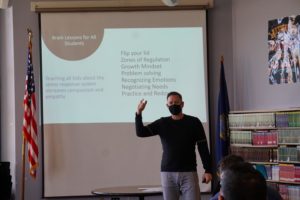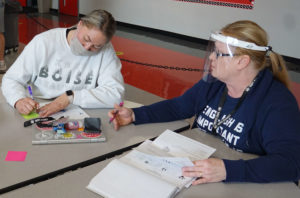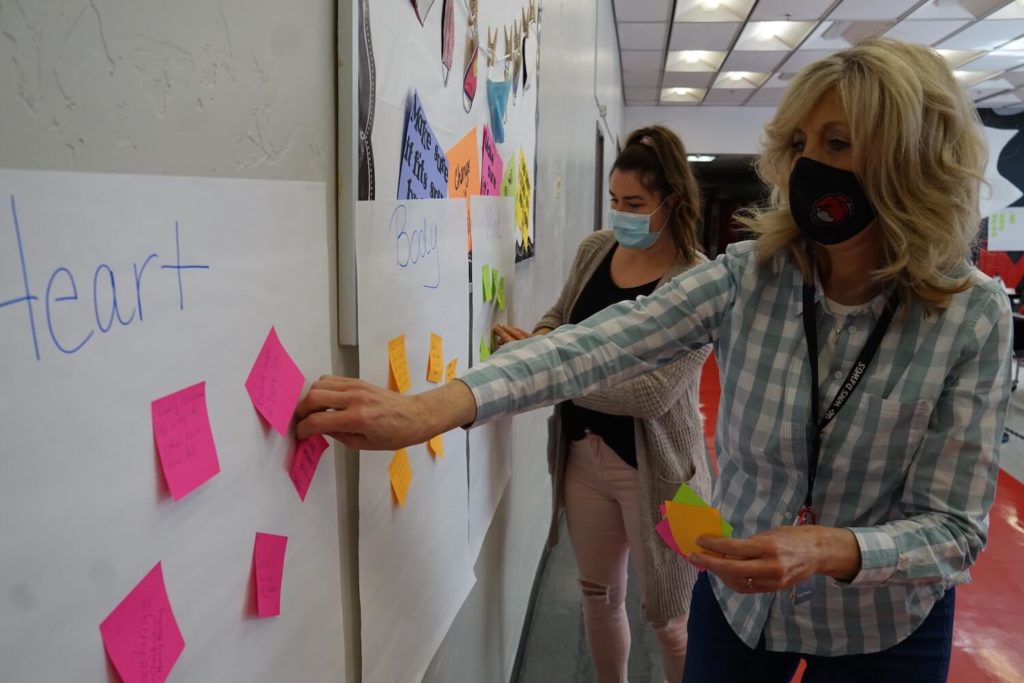The school district is taking an approach that ‘didn’t exist 10 years ago’ to help children learn
Youth behavioral health is one of Idaho’s most pressing health issues. The Nampa School District is taking a proactive approach around it, piloting youth behavioral health programs in Central Elementary, Sherman Elementary and West Middle schools.
The pilots, which consist of staff professional development and in-class curriculum and tools, are supported by a multiyear grant from the Blue Cross of Idaho Foundation for Health.
“I love the fact that we’re working together in three of our highest-need buildings,” said Dr. Paula Kellerer, Nampa Superintendent of Schools. “This is more than a math score or an English language arts score. This is a kid’s life that we’re shaping and developing.”
The schools have implemented social and emotional learning that uses positive behavior interventions to help students learn and grow their cognitive, emotional, relational and physical being. The grant funding includes multiple in-person training sessions with Keith Orchard, a mental health specialist for the Coeur d’Alene school district, who is a subject matter expert when it comes to focusing on the whole child in school settings.
“This type of approach didn’t exist 10 years ago,” Orchard said.
WHAT IS SOCIAL-EMOTIONAL LEARNING?
Social and emotional learning is how children and adults learn to understand and manage emotions, set and achieve positive goals, feel and show empathy for others, establish and maintain positive relationships, and make responsible decisions. The five key skills are:
- 1. Self-awareness
- 2. Self-management
- 3. Social awareness
- 4. Relationship skills
- 5. Responsible decision-making
Orchard spent two days during the spring semester in Nampa working with school staff. The training and workshops help teachers recognize emotional issues that impede learning, then assist students in choosing tools that help them regulate and prepare for learning.

“It’s beautiful to see teachers talk about kids in a wholesome way and understand the need to do so,” Orchard said.
The staff is on board that this training and approach works. Danielle Desjarlais, who has been a math teacher for 15 years at West Middle School, was recently able to identify that something was bothering a student.
“There was something in his eyes, and that’s why we had the conversation,” she said. “I don’t know if I would have recognized that before trainings like these.”
She talked with the child and learned that he felt he was a disappointment to his parents. She explained that he wasn’t disappointing but maybe some of his choices were. That simple, positive interaction between teacher and student helped the boy back to his usual self.
History teacher Jesse Rhodes, who has taught at West for seven years, said it was important to learn “the why” behind the training. He said that helps he and other teachers understand why some students struggle and what can be done to help them.
“I think the biggest one was understanding how the emotional section of the brain is working,” Rhodes said. “When a student is out of control, it impacts the brain, and the student is not able to learn or think. That’s probably been the most important piece for me.”
This training helps teachers to help students to manage behavior so that the student can get back on track learning.
PRACTICE MAKES PERFECT
Workshops are incorporated into the training, giving staff members the chance to practice using the consistent language they are taught with their peers. They role-play real classroom scenarios, which the staff find helpful.

Kristin Lira, who has taught math for 11 years in the district, acknowledges that she has had a few “flip-your-lid” moments because the subject matter can be overwhelming for middle school learners. This is when math becomes more than just addition, subtraction, multiplication and division. She said she is enjoying and learning the process.
“It just takes practice,” she said. “I like how West has embraced the program. It’s nice to use the same language, terms and application. I feel more confident now.”
Orchard said the Nampa schools are on the right track. He said it can take two or three years to change the culture at a school. Staff turnover is a factor, so he said it is important for the school to offer trainings, reminders, check-ins and leadership support. The district has taken this approach as a school, not just in individual classrooms.
“You can train a teacher, but when you train a whole school there is consistent language and responses that are really helpful to kids,” Orchard said. “It can be really hard for kids when things are inconsistent.”
